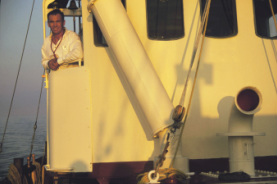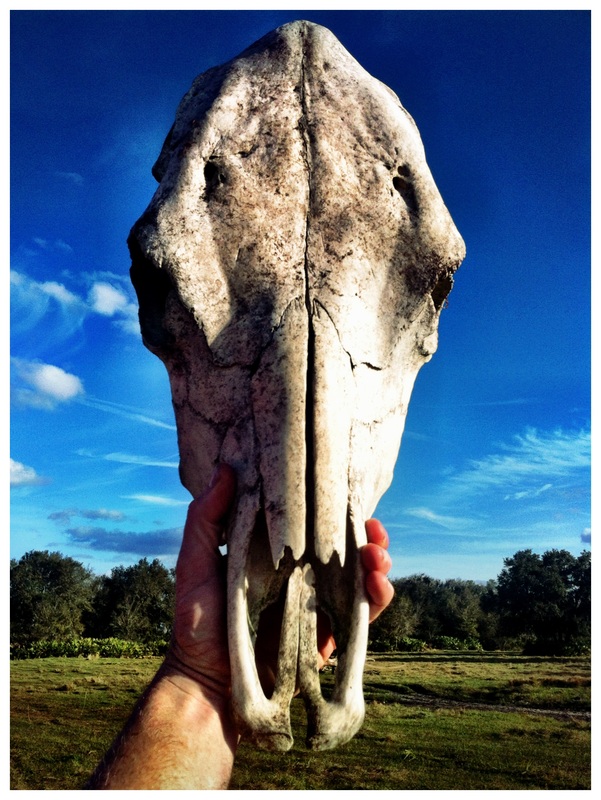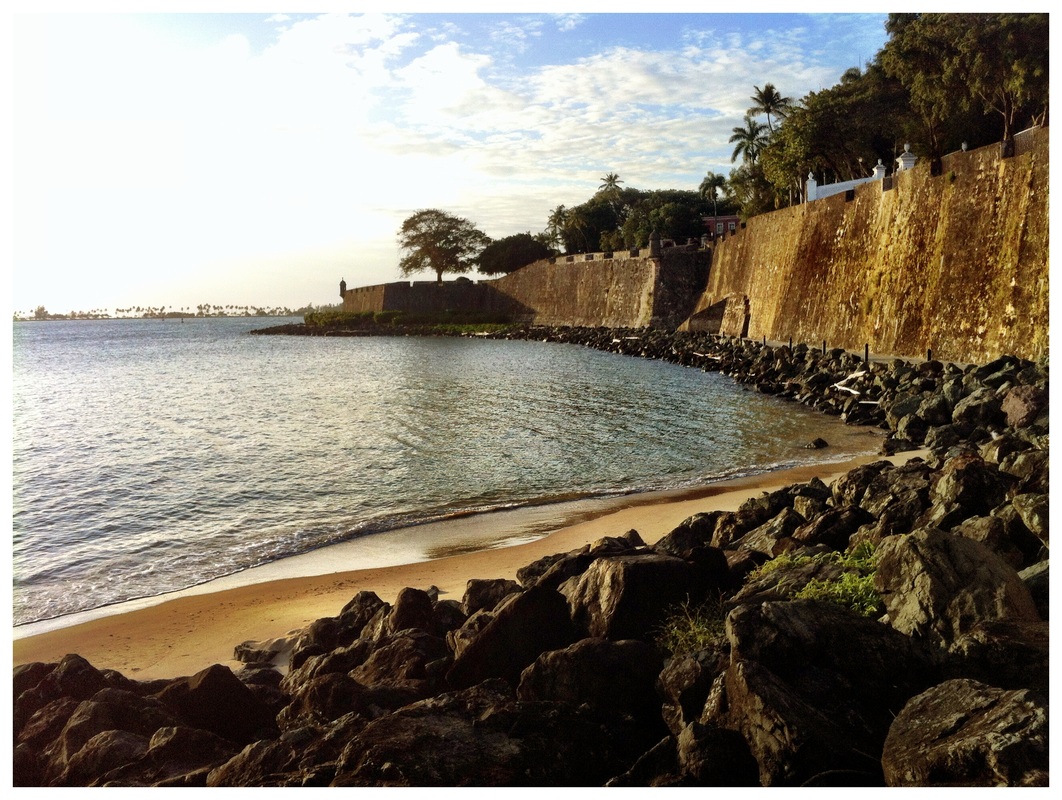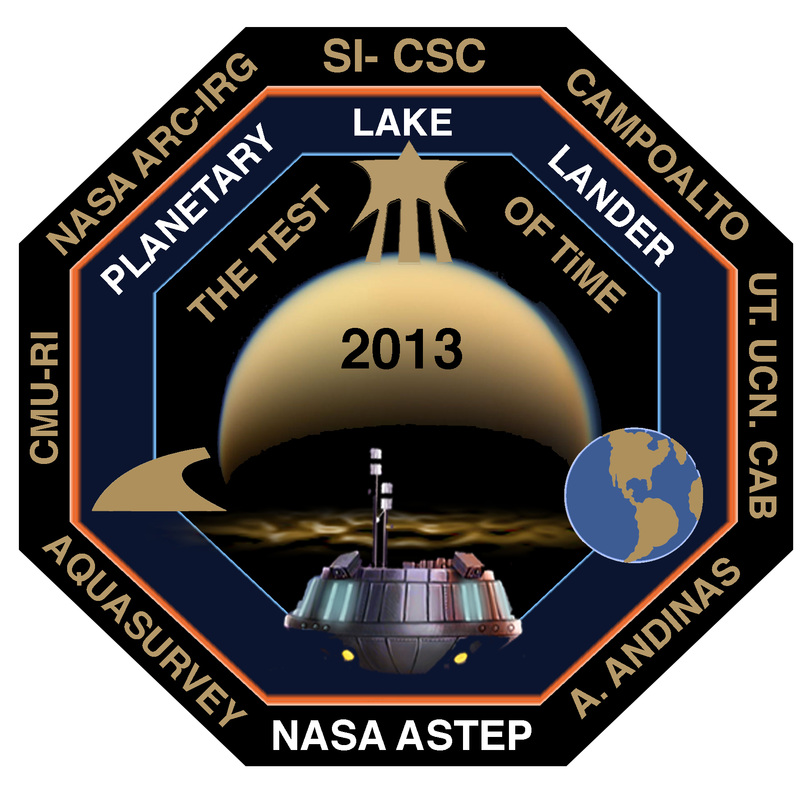I recently came across the draft of the story on a back-up and thought Id put them on a post on this blog (a previous version, spell checked and edited, was published in Solaris Hill Magazine). The scene opens at the Schooner Wharf Bar...
By Eric Wartenweiler Smith
For years if you sat on a stool at the Schooner Wharf Bar and looked out on the boats of all shapes and sizes in the Key West Bight, you would have seen two tug boats, red and black, with an F painted on the Stack. They belonged to Jimmy Felton, whose family had owned the A and B marina since the 1940's, and they were the sole Key West based tugs to help ships arriving and departing to safely make the maneuvers to dock in the Port of Key West.
Or maybe you didn’t notice them at all. It often seemed like they were invisible on some level, that they traveled through the yachts and fishing boats unnoticed. And I can testify that most of the young captains of dive boats and catamarans sailing snorkelers back and forth to the reef barely notice these working boats in the harbor, because back in the early 90’s I was one of them, busy hollering back and forth to one another on the Radio oblivious to work of the port going on quietly around us.
We were in tune to the conditions at reef, the impending weather, the exact moment that sunset would occur, while at the same time were almost obliviously weaving our way in between the Frigates, Tankers, Cutters and Cruise Ships as if the were slow moving geographic features, and as though the tug boats and pilot boats attending to them were uninhabited by anybody that communicated on our VHF Channels, or much less hung out at the bars at our end of Duval Street. They quietly did their work amongst a busy and oblivious harbor.
Then my own radar finally started picking up on them: the pilot boat, the C.O. Jones, and those incredible tugboats. I started listening tho the Bridge to Bridge channels and hearing the pilot’s calm instructions to their crew, while I watched the billow of smoke that haloed around a tug nuzzling against a ship with all the vigor of a bulldog after a bone. I made a point to find out more, and a goal to work on board.
I had met Jimmy Felton before, and had seen him scatter reporters and cameramen off the dock during the Cuban Flotilla incident of 1994(?) by line-backing his huge frame through them, sending TV cameras and equipment flying without a care, and knew he didn’t waste his own time with baloney or flattery. In my initial request for a starting position in his fleet he was polite and dismissive at the same time. My pedigree as a sunset captain didn’t impress him at all, and apparently I hadn’t even proven myself fit to handle lines on the deck of a Pilot boat. He also pointed out that there was not a lot of turn over, and that his crew was largely family and long time captains and crew.
I took another tack, to the other side of the Bight where salvage master Reef Perkins and occasional relief captain on the tug boats had his operations, and there I found better luck. Certainly Reefs boat "Ranger" showed up better on the radar of the average sailor. A small towboat with big attitude, Reef had established a legend for himself beyond control, and to work for him was definitely an invitation to notoriety and action. We salvaged wrecks, cut things up underwater, dove in every nook and cranny of the port. We dined in the Captains Mess on Coast Guard Cutters that had called on us for damage assessment, with a sharp young sailor standing at the ready at each corner of the table, and snapping to attention when Reef and his wharf rat diver requested more fries.
In due time I might have developed a salvors swagger, too. And I’m sure I did my share of steering a tow out of the way to sail by my old sunset sailing mates, and shouting at them to make sure that they all recognized that I had started my crawl up the hawsepipe to becoming a real mariner.
But I kept on pestering Jimmy, and finally in 1999 got to go for a ride on the 60 ft, 69 gross ton, twin screw, 1400 Horse Power Harbor tug the Captain Jim, Pride of the Felton fleet.
The Felton Line had 2 other boats of note at the time, The C.O.Jones was a multi purpose work horse of 40 ft in length, taking Pilots, crew and cargo nets full of supplies to ships passing by in the Gulf Stream far beyond the reef. With 400 horse power, she had the biggest back end of any work boat around, and could pull a grounded Shrimp boat 3 times her size of shoal with an impressive display of power. And the name irresistibly said it all. Pronounce from a Cuban Perspective, it was “ Cojones”
The fleet was completed with the tug Avon, and she was a true gem. Built in iron in 1882 before steel was even invented, she was the oldest working tug in America.
That first trip on the Tug Jim with Captain Jimmy Felton was an eye opener for me, of that you can be sure. Jimmy's position in the legacy of the Port of Key West was indisputable. His Family had owned the A and B marina since the 40’s and he had seen enough of life on that waterfront. From the Cuban Missile Crisis to the Mariele Boat Lift and the days when half the city seemed under indictment as part of a drug smuggling conspiracy, Jimmy had seen and experienced enough a to fill a library of books, and that experience led to a cool and hard to ruffle demeanor.
So imagine my distress when, as an eager and earnest apprentice deck hand, already and anxious in my hard hat and work vest and ready to serve, when we came along the vast grey steel wall that was the bow of a US Navy Frigate. My mind raced with concerns about the performance of upcoming duties, tying on heaving lines, throwing the monkeys fist, making of the giant headline on the bits... and what if I screwed up? The Entire US Navy was about to judge me on my knot tying abilities and I turned to Jimmy for orders. " What should I do to prepare?"
Jimmy, cool as can be, turns his back to the helm and starts opening mail with his big folding knife and says “ Relax, kid. Its not you that's undocking the ship, the Pilot is, and I promise He’ll call if he wants us to do something”.
So Jimmy hired me to start out doing pilot runs and crew transfers on the C.O. Jones, and everything was beautiful. I could walk from our house on William street right down to the waterfront at 4 in the morning with a packet of breakfast sausages and potatoes in foil, check out the engines, fire them up, put the foil pouch on the manifold, go back up the dock for a cup of coffee, and by the time I delivered the Key West Bar Pilot to the ship a few miles south of the seabouy, the sun had risen and the Gulf Stream was so blue it made your heart ache, and I would open the engine hatch to pull my steaming hot breakfast and cruise in toward an island just waking up, and often be back at the coffee shop at 9 . We’d do maintenance till noon and be done with a days work.
The pilot runs and crew transfers lead to the next step in my apprenticeship, which was to work on the deck of the Tug Capt. Jim, handling the huge lines that would be sent up to the ship with a monkey’s fist and a heaving line on the order of Captain Dave Ghidoni. Capt. Dave was the physical archetype of the tug boatmen at the time. At 6 ft 4 and 300 plus pounds to Jimmy’s same height, and in contrast was small but terrible Mate Danny Hendren, a poetic ex-con with a message for the arresting officers tattooed on the back of his forearms, and another of a pistol in his waistband, so size wise I felt physically inappropriate for either job. But it was all right because there would be plenty of time to grow a couple of inches or put on some weight before I would ever be considered for taking a turn at the helm.
Dave did not hand over the helm to just anyone. He had earned his position through a lifetime of sailing, and expected dues to be paid and lessons to be learned through observation and having the crap scared out of you often enough to know what can go wrong if you make a mistake.
It was months before he would even let me steer on idle trips to Safe Harbor and back, or hold various positions against the Mole while waiting for a ship to drop her lines.
After Dave had put me through the ringer on the Captain Jim, Jimmy started my training on the Avon. Re-powered from the original steam engine a couple of times as engines and technology progressed, she had one giant amazing 1500 hp engine that was brutally powerful and at the same time brutal to control with all the limitations of a single screw to maneuver her with. In the 120 years since the Avon was built, the working waterfront has figured out that it’s a lot easier to maneuver a boat with 2 propellers than one.
Incoming Ships expected us to be standing by, one tug on either side of Buoys 14 and 15 as they reached the sea buoy, giving us a half hour or so to shoot the breeze, listen to Biz-Baz, or occasionally drop a fishing line over the side. ( Incidentally, this is the same place that the light tackle boats take there customers in March for the Tarpon that boiled on the surface by the hundreds, and those fishermen did their best to communicate to us their displeasure and lack of understanding as to why we are idling around in circles in the middle of the greatest fishing spot on planet earth)
During this waiting period, Jimmy started my single screw tug boat handling training. Keep in mind that at this time I had already been a licensed captain for years, had worked as a salvage captain, and had sailed from Panama to Tahiti, so its not like I hadn't steered a boat before, but the training I was going through was for the most dangerous thing you could probably do in a boat, and the consequences of a mistake could be disastrous. The trials began by having me back in circles around the buoys as the current flowed by them like a river. Backing in a strait line is hard on any single screw ship, but critically important on a ships assist tug, which was expected to get into trouble, and back out of it quickly.
Avons massive rudder was moved by a giant hydraulic ram that took ten seconds to shift fully from port to starboard. And to go from forward to reverse took that long as well.Ten second might not seem that bad to someone sitting in a beach chair watching from the shore, but it was a nerve racking length of time in the heat of a maneuver, while pushing a little hydraulic handle on the bridge and guessing when something tangible will happen.
Within a few months he was having me back off the dock at the Marina, steer back-asswards through the very confused traffic in the Bight, and continue backing out through the harbor all the way to the buoys. then not long after I was manning the helm as we rushed up to the ship still going 10 knots and following alongside the quarter indicated by the Ships Pilot, as closely as possible in the wash and waves, but without touching it. When it came to actually going alongside to “Work “ the ship, the stress became even greater.
Many of the ships we were working at the time; aging cruise ships with classic canoe sterns, the big fuel tankers, and the fast Navy warships … did not have multiple bow and stern thrusters that put would eventually put the harbor tugs out of work. They would come into the harbor and have to turn their giant lengths around, back and fill and maneuver to reach their berth without hitting the pier, the shoal, or the ships that had came in before her. At the same time, no captain wanted to hear or feel the crash of a harbor tug slamming into their side, damaging doors and appurtenances, and no chief wanted to see a tug miss her shot and go sliding down the pristine white sites leaving a long ugly black streak of from our ‘Bow Pudding”, and no Ships Pilot wanted to hear that you weren’t where he had asked you to be, when he asked you to “Push Full. NOW!”
And the challenges to a tug boat captain to “stick “the landing were many and variable. The prop wash roiling down the hull one way could be switched completely by the Pilot with no regard to your planed line of travel, sending you washing, bouncing down the side trailing aircraft tire marks and heading right for the propeller. Or having to back away again, re-align yourself, and then come in to try again, which might take a full minute or two to pull off, no matter how hard you were slamming the gear box forward and reverse, or how high you would up the turbo charger in an attempt to get control of the stern.
And then suddenly you would be called to leave the side of the ship you were working to rush over to the other and manage a controlled crash into a specific spot; not on fragile portholes or opening Ports or under propeller guards that you could damage or get entangled in, and you know it takes 10 seconds to get from Forward to reverse, or to shift the giant rudder from port to starboard, so you come in fast and hard to maintain steerage as you maneuver through the stream but shift into reverse when you are still 100 feet away from your mark, and pray that the pilot didn’t call to shift that giant churning Ships propeller so as to cause the stream you had analyzed and computed in your now very experienced brain to slacken or reverse it, causing you to lean on the tiller so hard you fear it might break off in your hand, and to push your own ass hard sideways against the bulkhead wishing that your tug boat would sense the urgency and move her rump the same way so you could hit your spot. And all of this had to happen without you hitting the ship so hard as to cause damage, or even to have the Captain come out on the bridge wing and holler at you.
And then, once your bow pudding had a rubbery grip on the just right section of the ships hull, you could really put the hammer down. Both the Jim and the Avon had massive engines that up to this point in the trip had yet to even engage the turbo chargers. When you pushed hard forward and buried the control till your knuckles started crushing the wood, you would begin to feel the amazing amount of power at your disposal and the whole reason a Giant Ship 500 feet long had asked you to come around. As the turbo’s spun up, You would feel the stern sink out from under you disconcertingly, and look back to see that your giant propeller had dug a pit in the ocean so big that a vortex was rushing in to fill . The sky was filled with a cloud of soot and smoke so thick that the passengers on the cruise ships that had lined up along the rail to watch the cute little tug boat work would run in horror, horror, as a cloud of furious soot chased them across the deck. And then, slowly. the huge ship would begin to move.
With this power comes great responsibility, and there were plenty of dangerous times, for the crew of the tugs, too. Once Jimmy was so sure that the ship would tow us under that he threw all the windows of the wheel house open so that we could swim out if it did. One time I slipped off the rounded canoe stern of the “,” under full power and snatched up to the end of the headline, hard. The 3 inch line sang on the first shock and then drummed higher and Higher till it was taught as a piano string and I was aiming full power right at a pier built of crumbly concrete topped with tourist, and if the headline had broken before I got the power off (as they often do) I would have collapsed the pier, sunk the tug, and sent the whole crowd into the water at the ships stern. But it didn’t, phew.
So as you can probably guess, my long initiation was considered complete when one morning, without fanfare, I was sent out as captain to help bring a ship in to the pier and did so, with out sinking, killing my crew, or damaging the ship. Its not like the learning was over, though, and over the next few years I continued to learn the craft and encounter incidents that, after wiping the sweat off my brow and uttering an oath, would leave me remarking, " Well, I didnt see THAT coming". For several more years I kept at it, but over time things began to change.
Many of the older ships that needed ship assist Tugs faded away one at a time, were decommissioned, and replaced with new ships with multiple thrusters that could spin and dock on their own. Not one to stand still for long, I bought my own boat, a classic research vessel and that kept me much busier than I had anticipated, too busy to be available when trouble occurred and a salvage effort was launched.
As the amount of Ship Assist work slowed, Jimmy started selling off vessels from the fleet, including the C.O.Jones, Capt, Jim and eventually the Avon too. The Avon tragically sank on an ill-advised trip by the new owners to the Dominican Republic, and with her a tangible link to our nations maritime heritage. Tug Jim went to Venezuela (and was suspected sunk when a tender with her name on it was found floating off the Yucatan, and no word from the crew of the Jim, which had made the trip safely but didnt bother with contacting anyone about the lost deck cargo.) and the majority of the salvage operation, and the working boat community, had to leave the Key West Bight to the yachts and head for Stock Island, as the Shimpers and Commercial Fishermen had 20 years before.
The Majority of those mentioned in this story still make their living from ships and the sea, in one fashion or another, and we still gather around the stumps at the Schooner Wharf Bar from time to time and reminisce about the Working Waterfront " Back In The Day". An exception is our Mate Danny, who had done such a great job turning his life around after prison and saddened us all when he died in a motorcycle crash on the Number 2 Bridge. This story is dedicated to him, and all the scruffy and tattooed sailors that have departed the Port of Key West in search of adventure on the sea.
Copyright 2014
Eric Wartenweiler Smith
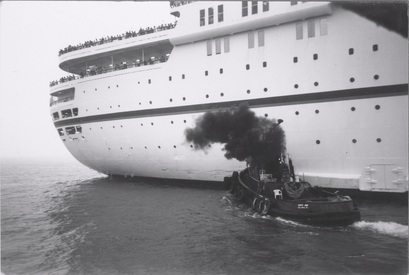
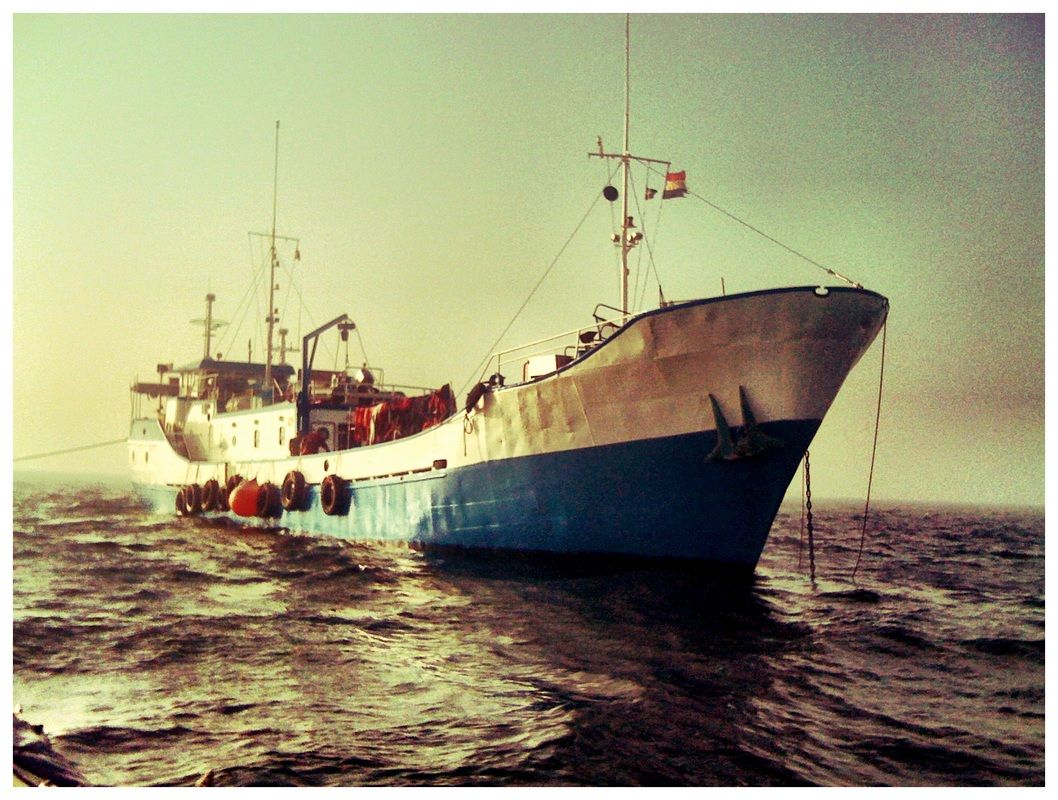
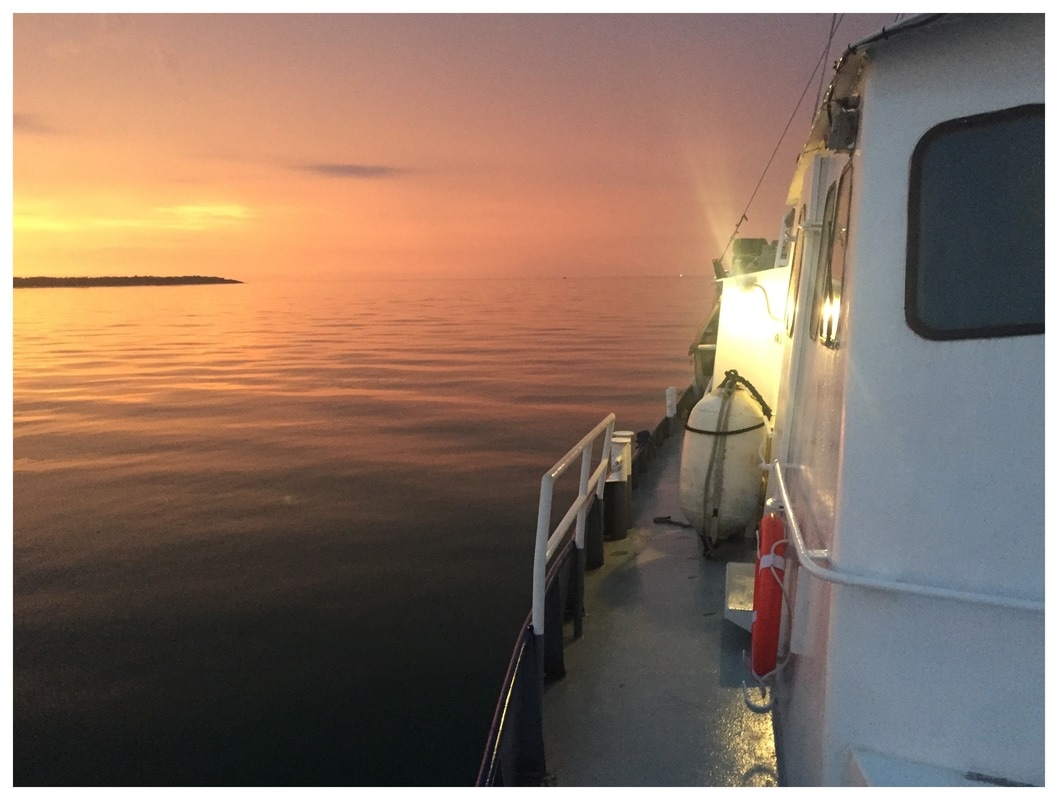
 RSS Feed
RSS Feed
